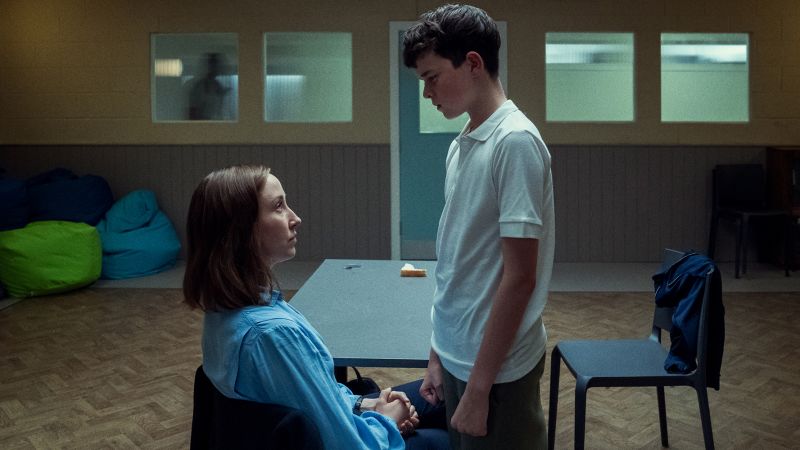The challenges associated with adolescence have long been a topic of exploration in various artistic mediums, but Netflix’s new limited series titled “Adolescence” takes this examination to profoundly distressing levels. Rather than showcasing the typical growing pains of youth, it presents a grim narrative centered around a shocking murder that serves to highlight how difficult life can be for the younger generation today. Through this lens, the series aspires not only to entertain but also to provoke thought about the societal issues facing young individuals in contemporary times.
“Adolescence” debuted on Netflix last Thursday, creating immediate ripples in popular culture. The British miniseries comprises four gripping episodes that quickly ascended to the top of Netflix’s viewing rankings. According to reports, the show garnered an astounding 24.3 million views within its first four days, revealing immense interest in its compelling plot and cast. The series features an ensemble of relatively unknown actors, which only adds to the intrigue surrounding its release and encourages audiences to invest in their performances without preconceived notions.
The central character of “Adolescence” is Jamie Miller, portrayed by newcomer Owen Cooper, who has no prior acting credits to his name. His character is a 13-year-old boy caught in a nightmarish scenario; he is arrested on suspicion of murdering one of his classmates found fatally stabbed. The emotional weight of Jamie’s predicament is heightened by the performances of his parents, represented by seasoned actors Stephen Graham, who serves as an executive producer as well, and Christine Tremarco. Their performances lend a sense of realism and gravity to the story, making the narrative resonate deeply with viewers.
What sets “Adolescence” apart from other titles in the thriller genre is its unique storytelling format. Written in part by Jack Thorne, who gained fame for his work on “Harry Potter and the Cursed Child,” the series adopts a structure more akin to a stage play. This theatrical approach enhances the emotional tension throughout the episodes, creating an atmosphere that compels viewers to engage with the characters and their dilemmas. It opts to build suspense through a carefully constructed narrative rather than relying on the rollercoaster of shocking plot twists typical of similar series.
One notable episode features an entire dialogue between Jamie and a child psychologist. This episode stands out dramatically, as it captures the raw essence of why Jamie finds himself embroiled in such heartbreaking circumstances. The challenging conversation lasts for 52 gripping minutes, pushing the capacity of the human psyche and forcing viewers to contemplate the traumatic realities present in adolescence. The emotional impact of this episode is akin to holding a heavy weight above one’s head for an extended duration, leaving audiences both mentally and physically overwhelmed by the conclusion.
The rollout of “Adolescence” shares similarities with another hard-hitting British production, “Baby Reindeer.” However, while “Reindeer” focused on the trauma of a single man’s experience, “Adolescence” embarks on a journey that requires viewers to witness and understand the broader implications of youth in peril. Each character’s experience interconnects, painting a complex portrait that transcends individual trauma, offering insights into a shared societal issue.
As the series progresses, viewers witness the unfolding of Jamie’s arrest depicted in a manner reminiscent of a basketball game. The emotional momentum is passed between characters, creating an intent focus on the harrowing details as they unfold. Interestingly, Jamie’s presence diminishes in the final episode, which starkly shifts to center on the emotional turmoil of his family and parents. This decision amplifies the tension and heartache that permeates the series, highlighting the ripple effect of trauma extending beyond the individual.
Parents, in particular, may find “Adolescence” particularly challenging to digest, as it stirs up anxieties rooted in the notion that “this could happen to my child,” exposing a raw vulnerability that resonates with caregivers. Each storyline encapsulates the everyday horrors and challenges that can easily be overlooked until they escalate into a full-blown crisis, rendering it a profound and thought-provoking viewing experience.
In summary, “Adolescence” on Netflix emerges as a significant cultural piece, addressing the oft-ignored yet pervasive issues confronting today’s youth. Through its meticulous narrative and raw emotional depth, it serves as both a powerful commentary on adolescence and a reminder of the collective responsibilities society bears in safeguarding its younger generation.











